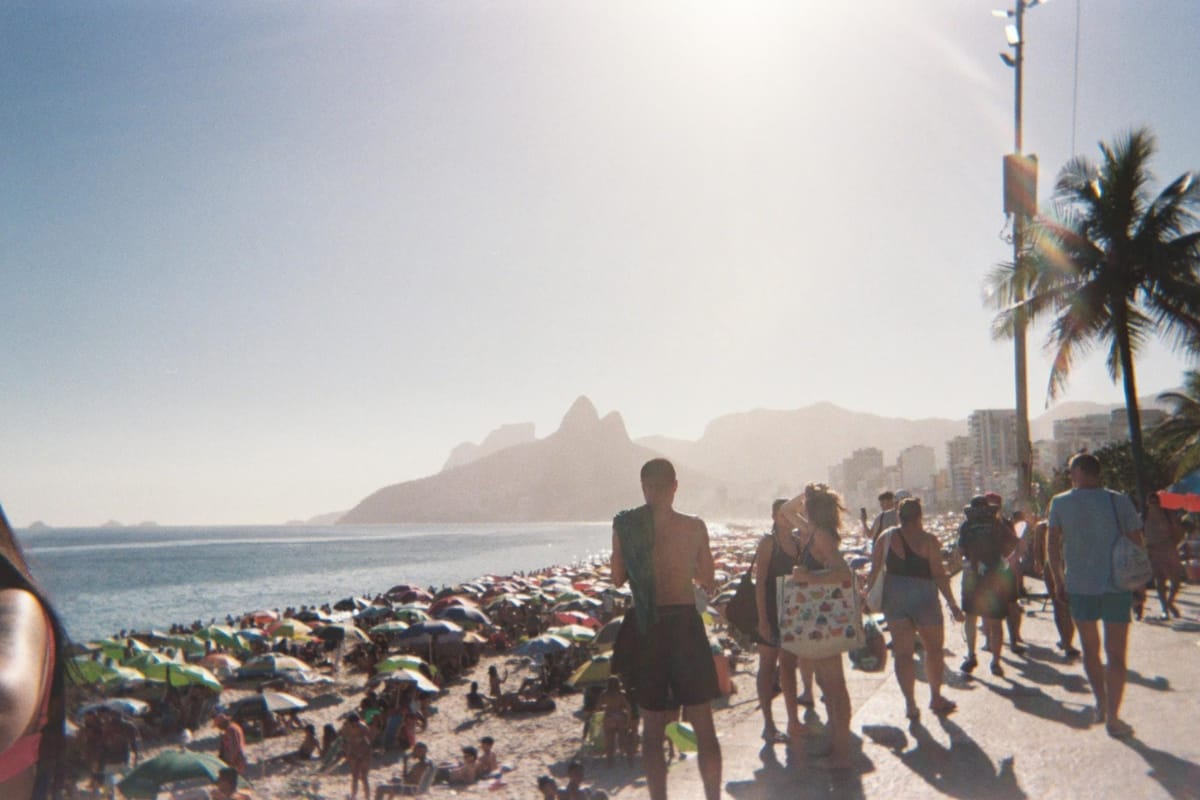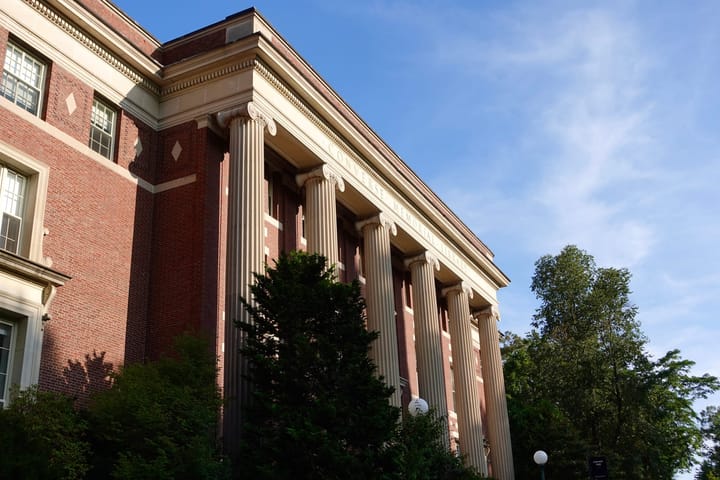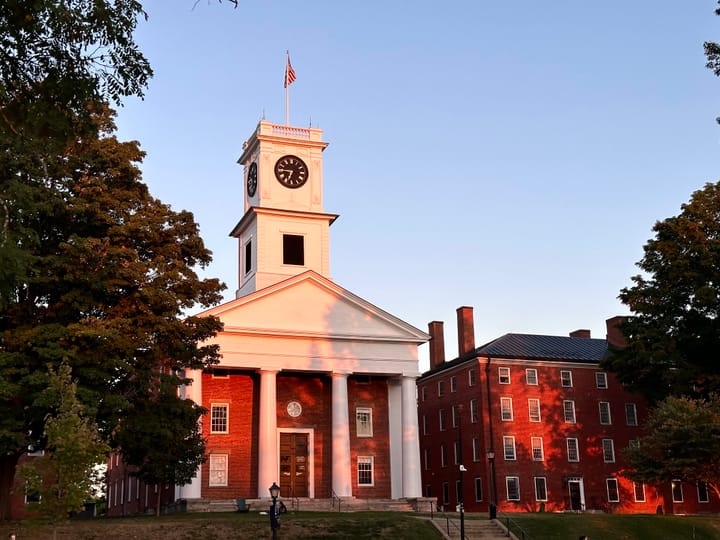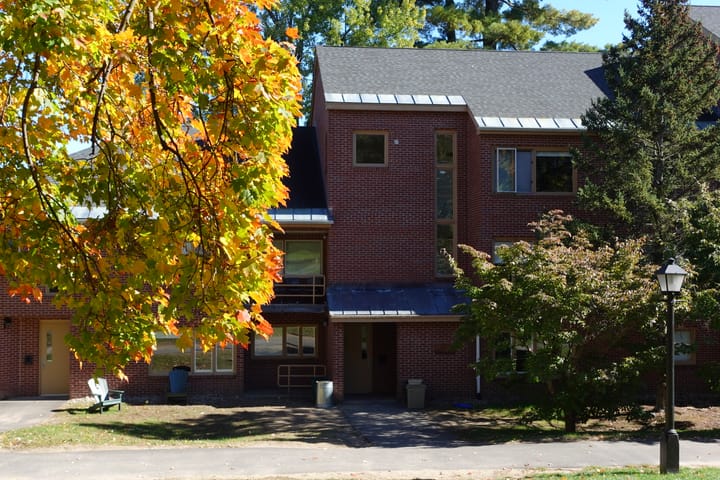Amherst Adventures Abroad: Rudy Echavarría ’26
In this edition of Amherst Adventures Abroad, Staff Writer Brooke Ingemi ’26 spoke with Rudy Echavarría ’26 about his semester in São Paulo, where he immersed himself in Brazil’s language, culture, and community.

From the roar of Carnaval parades to the fast pace of futsal matches, Rudy Echavarría ’26 spent his semester in São Paulo, Brazil, immersed in a city alive with movement, energy, and culture.
Having visited family in Colombia and Ecuador prior to studying abroad, Echavarría knew he wanted to spend his semester away from Amherst in South America. Interested in learning a new language, he focused his search on Portuguese-speaking destinations. Brazil, the largest Portuguese-speaking country in the world, immediately captured his interest. There was just one problem for Echavarría: All of the Amherst-approved study abroad programs in Brazil that did not require prior Portuguese coursework had been discontinued after the Covid pandemic. However, with guidance from Associate Director of Global Education Chelsi Colleton, Echavarría discovered the CET Brazil program, successfully petitioned for its approval, and was able to spend his spring semester in São Paulo, the country’s most populous city.
During his time in the program, Echavarría engaged with the issue of social inequality in Brazil through academic courses, a traveling seminar, field activities, and community engagement. As part of the program, he lived in a six-person apartment with three American students and two Brazilian students from Pontifícia Universidade Católica de São Paulo (PUC-SP) — the local university affiliated with the CET Brazil program and where Echavarría also took some classes. Echavarría quickly bonded with his Brazilian roommates, who became not only his close friends but also his informal guides to the city’s rhythm.
Although at Amherst, Echavarría is a physics major, he saw study abroad as an opportunity to explore classes outside STEM. “I wanted to try something different and take different types of courses,” he said. To gain a deeper understanding of Brazil’s history, society, and politics, Echavarría enrolled in a variety of political science and sociology courses, including classes like “Social Justice and Inequality in 21st Century Brazil,” “Brazilian Economics and Development,” “Brazilian Politics and Society,” and “Brazil-U.S. Relations.”
Since he could not speak Portuguese at the beginning of his program, Echavarría leaned on his Spanish skills to help him through conversations. “I tried to use my Spanish as much as possible to try and figure stuff out. There are many parallels between the two languages, which were extremely helpful,” he said. He also took a “Portuguese for Spanish Speakers” course to learn how to apply his Spanish knowledge effectively. Determined to fully immerse himself, Echavarría took his core course — “Social Justice and Inequality in 21st Century Brazil” — in Portuguese rather than English and made conversation in Portuguese a central part of his daily routine. “I would constantly try and talk in Portuguese all the time with my [Brazilian] roommates,” he said, noting that this helped him gradually feel more comfortable branching out into the local culture.
Looking for ways to meet more locals and practice Portuguese outside the classroom, Echavarría joined the International Relations futsal team at his nearby university. Futsal, a fast-paced five vs. five indoor version of soccer, is one of Brazil’s most popular sports. For Echavarría, futsal practices offered more than just a chance to play a sport that he loves — they provided lessons in Brazilian humor, culture, and communication. After practice, he would hang out with his teammates — most of them locals or from other cities in Brazil. “I was just kind of smiling and nodding at first,” he said, recalling his early attempts to communicate with his teammates, who mainly spoke in Portuguese. “But then by the end, I felt fully immersed in their friend group. We had our own little jokes. They even gave me my own nickname,” he added.

Echavarría’s relationships with his futsal teammates also gave him a firsthand glimpse into Brazil’s deep-rooted soccer culture. His Brazilian teammates constantly tried to recruit him to support their local clubs, even though, as Echavarría joked, “A lot of them are rivals.” He attended everything from a top-division match, feeling the roar of a massive stadium, to a fourth-division game where one of his teammates’ fathers volunteered as a medic. At every level, he witnessed how passionately soccer unites generations and local communities across Brazil.
When he wasn’t studying or playing futsal, Echavarría explored São Paulo through food. A staple in his diet was arroz, feijão e farofa — a dish of rice, beans, and toasted cassava (or yuca) flour. He also loved a dish called virado à paulista, served every Monday at his local food stop, Café Pacaembú. “It’s very similar to one of my favorite Colombian dishes, bandeja paisa. So I really liked that,” Echavarría said. He also enjoyed pão de queijo, a popular Brazilian cheese bread, and pastels — deep-fried pastries which reminded him of empanadas de viento, an Ecuadorian pastry.

Cuisine was just the beginning of Echavarría’s deep dive into Brazil’s vibrant culture. Another highlight for him was experiencing Carnaval, a five-day festival in February that transforms cities across Brazil into rivers of color, music, and movement. His sister and several friends, many of whom were Amherst alumni, visited him during this time to experience the celebration, too. “It was really just an incredible period of time. Everyone is on the streets,” Echavarría said. He attended celebrations in both Rio de Janeiro and São Paulo, noting that while Rio often dominates the spotlight, the celebration extends across the entire country.
Echavarría was struck by the music and energy of Carnaval performers filling the streets. “It was very cool to see streets completely closed off so that artists could perform,” he said. At the “blocos de rua,” community-organized street parties, he witnessed some of the biggest artists he had ever seen playing for free all day, starting sometimes as early as 6 a.m. He also highlighted the beauty of the intricate floats, vibrant designs, and crowds alive with music, dance, and celebration. “You see stuff online, you see stuff in movies, but to actually see it in person was really incredible,” he said.

Exploring beyond São Paulo quickly became a central part of Echavarría’s semester abroad. In addition to attending Carnaval in Rio de Janeiro, his program took him on a week-long trip to Salvador, Bahia, a coastal city where Afro-Brazilian culture thrives. He also traveled to Foz do Iguaçu, home to the Iguazu Falls — a stunning series of waterfalls honored as a UNESCO World Heritage Site. “It was one of the most beautiful things I’ve seen,” Echavarría said.
Another destination for Echavarría was Brasília, the nation’s capital, known for its bold modernist architecture. The trip was meaningful for him because he had already studied the city’s architecture during his time at Amherst through the course “Architecture and Violence in Latin America,” taught by Assistant Professor of Spanish Ludmila Ferrari. “We spent a couple of weeks covering [Brasília’s architecture], and so I was really motivated to go see that in person,” Echavarría said. Walking around Brasília on a free tour funded by the city, he was able to see how the concepts he learned in the classroom at Amherst came to life in the actual city’s designs.

Thanks to Echavarría, the “CET Brazil: Social Justice and Inequality” program is now an Amherst-approved study abroad option — a major win for future Amherst students hoping to study in Brazil and connect their classroom studies with real-world experiences. Reflecting on his time abroad, he said, “[CET Brazil] provided me with such an incredible and rewarding experience. I highly recommend this program to all.”
Echavarría also emphasized how helpful the Amherst Global Education Office was in making it all possible. “Work with the Abroad Office. They’re so helpful in helping you find what you want,” he said. Looking back on his time in São Paulo, Echavarría offered advice to Amherst students considering spending a semester away: “I really don't think you can go wrong studying abroad,” he said. “Just follow whichever place seems like it’s calling to you … because no matter what you do, it’ll be such a rewarding experience.”





Comments ()